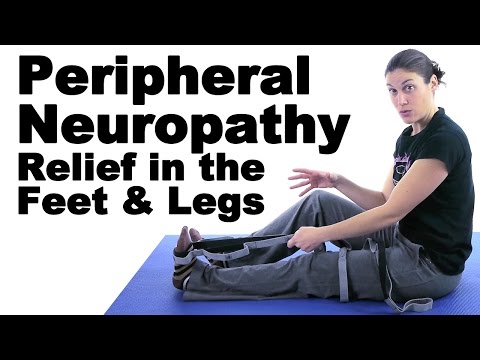
Sciatica is pain, numbness, or tingling down the back of your leg that originates in your back and travels down your leg. Oftentimes exercising and moving in certain ways can help to minimize these symptoms. This is a progression of the best physical therapy exercises to help you treat your sciatic nerve symptoms.
** HOW TO DIAGNOSE YOUR SCIATIC NERVE PAIN:
** SCIATIC TREATMENT FOR DEGENERATIVE DISC / STENOSIS:
** SCIATIC TREATMENT FOR PIRIFORMIS SYNDROME:
** HOW TO SLEEP WITH BACK PAIN/SCIATICA:
==========================================
THIS IS PHASE ONE OF A 2-PART SERIES! SEE PHASE TWO/STRENGTH EXERCISES HERE:
==========================================
(Below we’ll discuss sciatic nerve pain as related to the most common cause – a bulged or herniated disc. If your sciatica is coming from a different source, this may not be the best exercise progression for you. You’re encouraged to consult with your doctor or physical therapist for an individualized treatment plan.)
As a doctor of physical therapy, spine injuries are the most common condition that I treat.
It seems like at one time or another low back pain or neck pain inflicts all of us. To a degree, almost all of us will experience some degree of low back or neck pain.
Depending on the cause of your low back pain, you may experience the accompanying symptom of sciatica. This is characterized by pain/numbness/tingling down the back of your leg. It can travel to your glute, hamstring, or (in more severe cases) down into your calf and ankle.
Today I wanted to share with you the best exercises for treating sciatic nerve pain. This method of treatment is it clinically proven and backed by dozens of research studies to be the most effective exercise treatment for a common cause of sciatic nerve pain.
PHASE ONE: LAYING PRONE ON YOUR STOMACH
The simplest way to promote extension through your spine is to lay down prone on your stomach. This will create a natural curve to your back and vertebrae which will push the disc in the right direction. Gravity also works on the disc in this position to draw it closer to the center.
I recommend people start here until they can lay in this position for 2–3 minutes. When this becomes comfortable and there is no increase in your sciatic nerve symptoms, progress to Phase 2.
PHASE TWO: PRONE ON ELBOWS
Bring your elbows directly under your shoulders and lift your chest up off of the floor. Your hips/stomach should stay in contact with the floor. In this position we promote increased extension through your lower back and draw the disc a little more aggressively back in the place.
Hold this position on your elbows for about 10 seconds, then lower your chest back down to the floor for 10 seconds, then repeat. This prone on elbows extension activity should be repeated 10 times for 10-second holds two times a day.
When prone on elbows becomes comfortable and there is no increase in your leg symptoms, progressed to Phase 3.
PAHSE THREE: HALF PRONE PRESS UPS
Now bring your hands directly under your shoulders. Lift your chest up off of the floor by extending your elbows approximately halfway. Once again, your goal is to keep your stomach and pelvis in contact with the floor and promote extension through your lower back.
Hold this position for 10 seconds and then return to the full prone position with your chest on the floor. Rest 10 seconds and then repeat.
Perform 10 reps of 10 second-holds two times daily.
When Phase 3 becomes comfortable with no increase in symptoms in your legs or pain in your back, progress to Phase 4.
PHASE FOUR: FULL PRONE PRESS UPS
A full prone press up is performed in a similar manner to the half press-up; the difference now is that your goal is to fully extend your elbows. Try to keep your pelvis/stomach in contact with the floor as your extend your elbows fully and raise your shoulders as high as they can go.
Perform 10 reps of 10 second-holds two times daily.
When Phase 4 becomes comfortable with no increase in symptoms in your legs or pain in your back, progress to Phase 5.
PHASE FIVE: STANDING BACK BEND
The standing back bend is performed by leaning over as far as you can backwards from a standing position. This is a little more aggressive than those I previously showed because it is in a weight-bearing posture and you do have to engage some muscles to keep from falling over. However, this is a great exercise to work some of your disc material back into place and minimize those sciatic nerve symptoms.
Try holding this position for 5 seconds, come forward for 5 seconds, and then repeat that 10 times.
Properly treating sciatic pain with the right exercises at the right time can be a very effective, non-invasive form of treatment for these symptoms.






